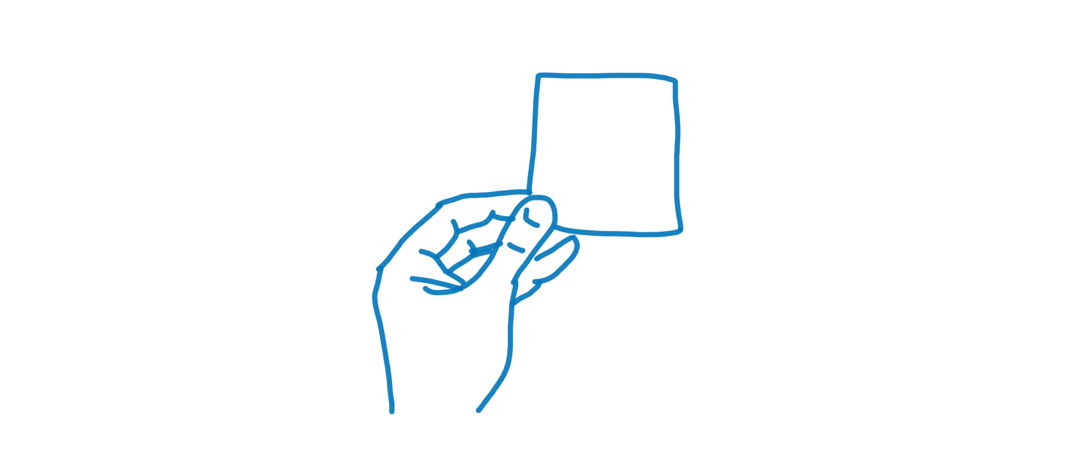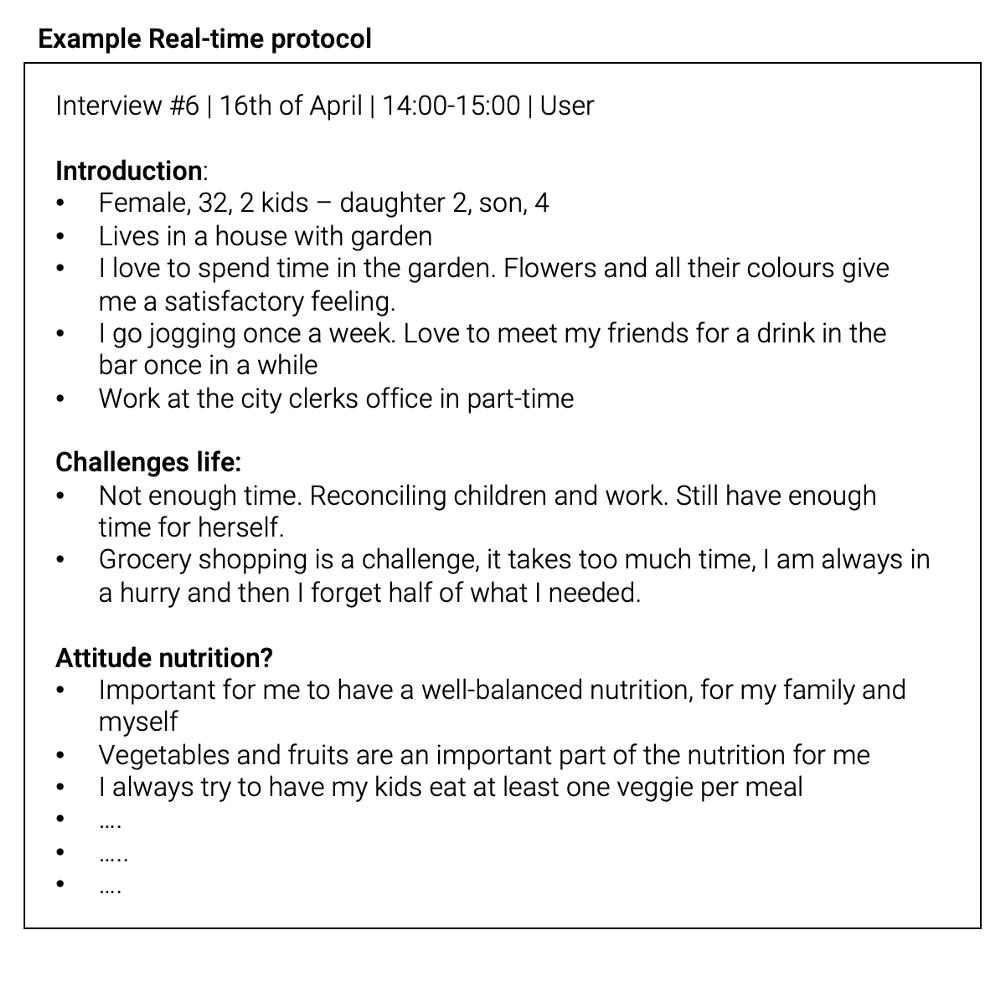Efficient Note-Taking for Usability Tests & User Interviews
You do not just conduct research for the sake of it but to generate great insights in the analysis. A proper documentation of your interviews is key to reach this goal. This article shows you four fast and lean strategies on how you or an observer can take notes during a (remote) usability test or user interview - so that you can save time during analysis.
Why proper note-taking is Critical
Documenting when you have just one interview is already important, documenting when you conduct more than one interview is essential! You might be a genius or have a memory like an elephant. However, remembering details from six, seven or even fifteen interviews will clearly stretch you to your limit.
You don’t want to lose all those details that will bring you to your precious insights. Additionally, during the course of your analysis, you might need to re-arrange or take another route — going back to your research documentation is essential to check whether your conclusions are valid.
Your options to tackle the documentation
If you’ve been a diligent reader of my articles, you already know that I never go with proposing just one but multiple ways on how to tackle a challenge. You may choose what works best for you under your given circumstances.
Almost all my proposed options assume that you have another person assisting you with notes. If not, you might wanna write a transcript after the interview (based on your recordings) or do a detailed brain dump after each interview.
Option A: real-time protocol / minutes
Whilst you conduct the interview, someone writes down everything that is said in a protocol (e.g. in a Word document). Saying this, I am not talking about a word-by-word transcript, but I am thinking of a person who is quick in typewriting on a computer. By the time the interview is over, you already have your protocol (not a transcript). Love it!
How to: It is essential that you brief your assistant upfront so it is clear what you are looking for. Here are my personal basics:
Give context: provide your note-taker with the interview guideline to prepare (e.g. are there any specific terms used — for a product or a health care treatment? Are there specific labels for stimulus material, which might be difficult to understand if you have a mumbling interview partner?)
Set the focus: make clear, that you don’t need the interviewer questions documented in detail but that they are only needed as context to understand the answer (e.g. If I ask as an interviewer “Please go into more detail about what you especially like about the proposal A?” , it is sufficient for me to have ‘Likes A’ as headline to all answers in that section)
Quantity not quality: misspellings, commata, upper and lower case are absolutely unimportant. Most important: write down as much as possible.
Take notes and do not interpret: it is of highest importance for me that the note-taker writes down what is said and not his or her interpretation! As a researcher, I do need the initial words in my protocols. Interpretation comes later!
Best fit: Any research with a special fit for in-depth and ethnographic research. Actually, this is my favourite go-to solution (and the option all research professionals I know absolutely recommend and favour).
Advantages: It is quick and you have the protocol available right after the interview. Since it is done via machine writing on a computer, it will be quite detailed and won’t miss a lot. Additionally, you have the initial wordings / vocabulary noted down.
Disadvantages: Despite the fact that you need to find someone who takes the notes, I cannot think of any.
Option B: Template (for real-time or post-documentation)
Prepare a little template upfront and your note-taker fills in the blank spots (handwritten or digital).
How to: your prepared template should include the areas & topics you want to learn about — use your interview guideline as a start. It is up to you to sit down upfront and think where you really need information (e.g. list of electronic devices in the flat, what are the pros and cons of taking a bike to work etc.). Potentially it might even make sense to have check boxes included in case you know that for specific questions there might only be specific answer choices (this certainly speeds up things).
Prepare this template with the utmost caution! You frame what you would like to have noted down, so better not miss out on something important.
Best fit:
Testing of very specific stimulus material like a prototype
In a situation where you work with multiple researchers without a note-taker and want to make sure that the single researchers cover all areas in the post-interview brain dump (e.g. with ethnographic research or In-Home visits)
Advantages: You prepare your own interview even better as you already think about a documentation that makes sense upfront. Additionally, you give your note-taker a framework.
Disadvantages: Interviews are with real humans and unforeseeable topics might pop up during the course of the conversation. It is difficult to craft a template that caters to the unforeseeable.
Option C: real-time Sticky Notes for Affinity Diagramming
The note-taker writes on sticky notes during the interview.
How to: again, prepare your note-taker regarding what you need and how to best use the post-its:
Define a colour code (e.g. green = positive | red = negative | yellow = further ideas / additional information)
Ask the note-taker to ‘code’ the post-its according to the interview number (otherwise you won’t be able to re-assign who said what later on)
Prepare and structure a (digital) whiteboard or wall with the major topics you are going to cover
Best fit:
Testing of very specific stimulus material like a prototype where the threefold of coloured post-its makes sense
If you want your listeners to already interpret what they hear. Especially when you are in a time pressuring set-up, it might make sense to ask the note-taker to immediately work in the How-might-we-format (HMW). This means, that every post-it should be a HMW-question (don’t note down what you hear “It takes such a long time to open the can.” but note down where a solution is needed “HMW speed up the opening of the can?”)
Advantages: Very focussed in a testing as well as a time-pressuring scenario. It also helps you engage additional listeners, as note-taking on post-its is more active than just listening. Additionally, post-its make it easier for your analysis — you can arrange and rearrange on a board quickly. This way, many researchers map, cluster and extract their insights right after interviews when there is little time for reporting.
Disadvantages: I am quite aware that a lot of readers will shake their heads in disbelief: I am not a big fan of note-taking on post-its when it comes to documentation of generative research, such as in-depth interviews. Post-its only offer a limited amount of space which often leads to the situation that a note-taker writes down the interpretation and not what was actually said. You may lose a lot of the context. Which can be particularly problematic for in-depths explorations.
Option D: Transcription software
You upload the recordings to a tool that automatically transcribes what is said.
How to:
Find a tool that covers your interview language and that can be trusted with confidential data in the cloud.
Upload the recordings after the interview and wait for the magic to happen.
Best fit:
You have a lot of verbal information rather than visual, e.g. focus groups or in-depth interviews and no support with note-taking
You need strong soundbites for your reporting and need to be able to find them fast
Advantages: You can work without a note-taker and the breaks between interviews can be used for recovery rather than additional mental effort. After transcription, you will be able to do full-text search through all interviews in order to find a strong quote on specific topics, often the video snippet is already ready for download.
Disadvantages: Well, you still have the full load of information, nothing is filtered or extracted yet. These transcriptions are not suitable to quickly browse through when you write your report, they are rather an easy way to find the right video snippet and quote illustrating your analysis. Additionally, even with the impressive progress in voice recognition of the past years, these tools are still not perfect when it comes to transcribing dialects, accents, names, professional jargon, or languages that are not English. You cannot rely on these transcriptions to be complete. Imagine you are looking if somebody mentioned the name of a competitor brand during the interviews and the search result finds nothing. Well - quite likely, the tool just misread what was said and transcribed a different word instead. Had you or an assistant briefed on the topic taken notes and knew brand mentions were important, that detail would not have slipped through.
So, what is the best way? Again, there are a lot of options. Choose wisely according to the situation and your documentation needs.
Check our blog and follow us to learn more about User Research and UX Researcher life.




